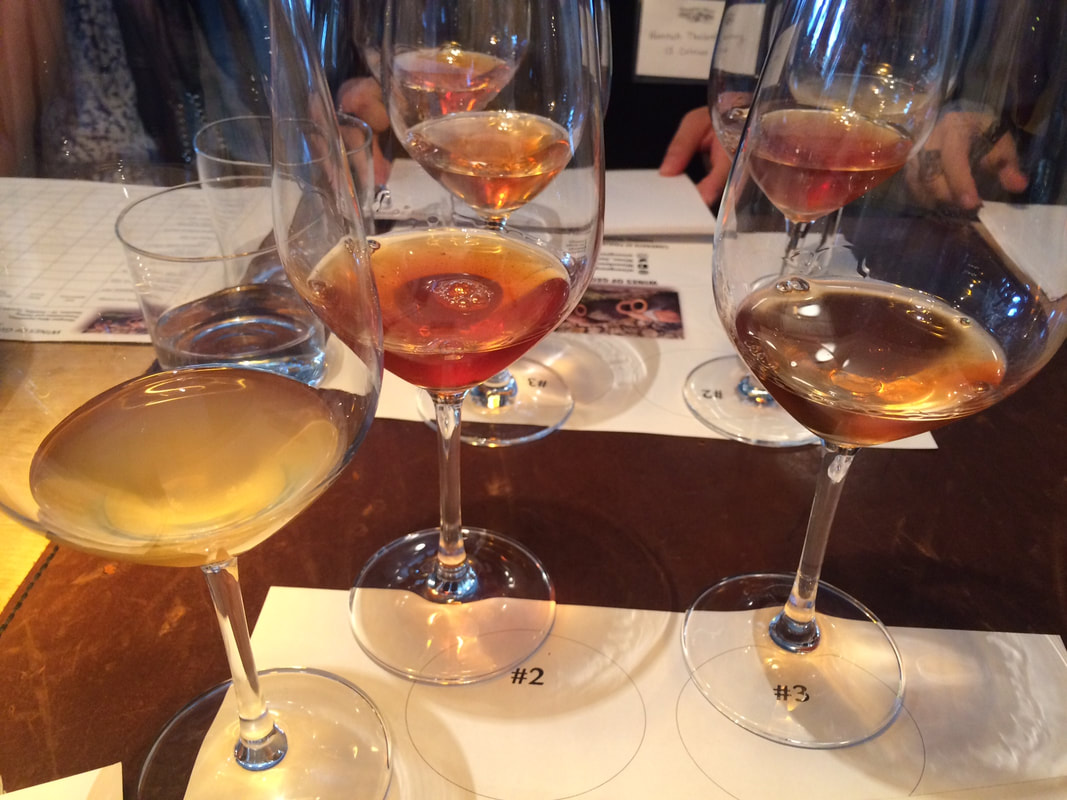Well, Georgia is rather obscure, which might ring bells for being invaded by its neighbor Russia in 2008. It might be better known as Stalin’s birthplace (and that of his sadistic security chief Lavrentiy Beria, too). Located in the eastern edge of the Black Sea and bordered by Russia, Azerbaijan, Armenia and Turkey it extends from the sea into the Caucasus Mountains, it is home to about 4.5 million people and countless small winemakers, mostly those making it just for families. The wine culture is so pervasive, according to Taylor Parsons, wine director of the restaurant Republique in Los Angeles who lead the event, that Georgian feasts typically budget a staggering three liters of wine per guest. They like wine there.
Georgian wines have garnered some press in recent years, mostly as an inspiration for winemakers in northeastern Italy by their use of amphora – called qvervi – for fermenting and aging wines, and for the so-called orange wines, white wines with extended skin contact and thus more body, tannins and often and orange hue.
But, what does it offer an American consumer, a consumer based in Houston? I think so. The nearly dozen wines tasted were all noticeably well-made and distinctive. And possibly something to complement the way that you eat and drink. They offer something different on the ever-growing world of quality wine. At least a couple tasted broadly similar to Flemish sour beers, though lighter-bodied, but likely working very well as an aperitif. My favorite of this style was the oddly named Our Wine made with the white Rkatsiteli grape fermented for six months in amphora that was bright, tart and flavorful with an enjoyably long finish. The best red for me, and the best wine of the day, was Saperavi variety by Kindzmarauli Mariani that was excellent: balanced, with interesting fruit notes, very long-lasting, and modern-tasting in the best way.
That might have been the most modern style of wine, but it did not taste of the New World. None of the wines brought tasted rustic, but distinctive, especially the two natural wines, which I found both discordant and not terribly pleasant. All of the wines featured good acidity, and most would make for good food wines, each matching a different array of dishes.
You might want to give one a try, though you probably will not be able to find many, if any, of the good wines of Georgia on local lists or stores. But, stay tuned; there was interest in the room among wine buyers.
A few of the orange wines from Georgia.

 RSS Feed
RSS Feed

